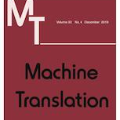Although emotions are universal concepts, transferring the different shades of emotion from one language to another may not always be straightforward for human translators, let alone for machine translation systems. Moreover, the cognitive states are established by verbal explanations of experience which is shaped by both the verbal and cultural contexts. There are a number of verbal contexts where expression of emotions constitutes the pivotal component of the message. This is particularly true for User-Generated Content (UGC) which can be in the form of a review of a product or a service, a tweet, or a social media post. Recently, it has become common practice for multilingual websites such as Twitter to provide an automatic translation of UGC to reach out to their linguistically diverse users. In such scenarios, the process of translating the user's emotion is entirely automatic with no human intervention, neither for post-editing nor for accuracy checking. In this research, we assess whether automatic translation tools can be a successful real-life utility in transferring emotion in user-generated multilingual data such as tweets. We show that there are linguistic phenomena specific of Twitter data that pose a challenge in translation of emotions in different languages. We summarise these challenges in a list of linguistic features and show how frequent these features are in different language pairs. We also assess the capacity of commonly used methods for evaluating the performance of an MT system with respect to the preservation of emotion in the source text.
翻译:虽然情绪是普遍性的概念,但将不同情绪的阴影从一种语言转移到另一种语言,对翻译者来说可能并不总是直截了当,更不要说机器翻译系统。此外,认知状态是由口头和文化背景所塑造的经验的口头解释而建立的。有一些口头背景,情感的表达构成信息的关键组成部分。对于用户感化内容(UGC)来说尤其如此,这种内容可以采取审查产品或服务、推文或社交媒体文章的形式。最近,Twitter等多语种网站的常见做法是提供UGC的自动翻译,以便接触其语言多样性的用户。在这种情况下,翻译用户情感的过程是完全自动的,没有人的干预,既不用于编辑后或准确性检查。在这项研究中,我们评估自动翻译工具能否在以用户感化多语种数据(如推特)传递情感方面成功地发挥真实的效用。我们显示,在翻译不同语言的情感翻译中,有特定的语言现象构成挑战。我们用语言特性来评估这些常态语言特征,并用这些常态语言特征来评估。



